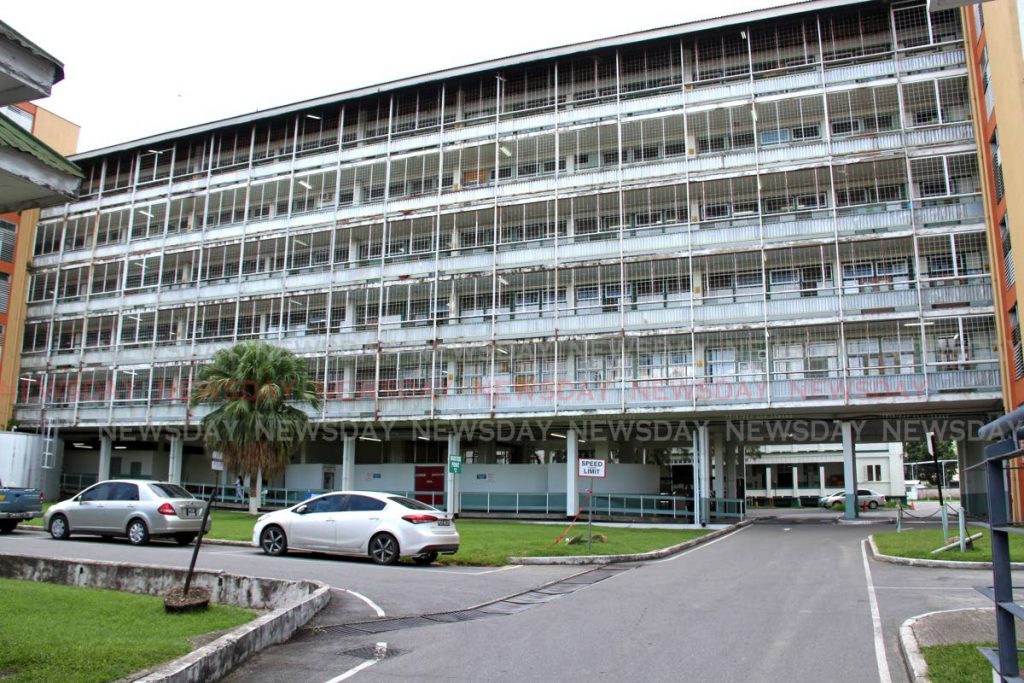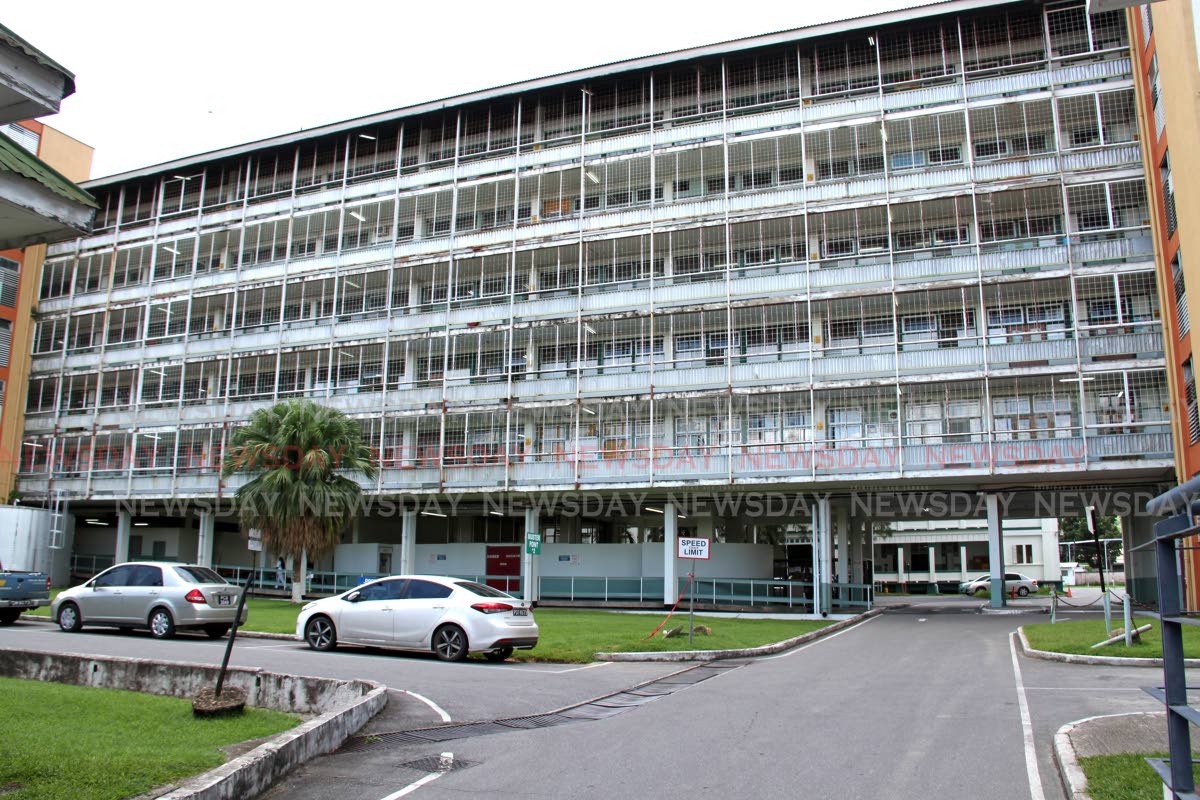PoSGH lucky to survive quake

Despite the Prime Minister’s statement that successive administrations since 2009 spent billions of dollars on the central block of the Port of Spain General Hospital, one professional architect said he was sceptical that much money had been spent on improving its safety over the past nine years.
Dr Keith Rowley made the statement at a Conversation with the Prime Minister at the Scarborough Library, Tobago, on Thursday night. He said although the central block survived, it suffered some damage after Tuesday’s 6.9 magnitude earthquake. He added that it was now worse than it was in 2009 when independent reports from Aron Bush, PAHO and Lee Young and Partners were submitted about the building’s structural integrity.
Speaking to Sunday Newsday, the architect said, “I don’t think they have done anything to be honest. I heard the PM said that billions of dollars have been spent on it since 2009, which to me is complete crap. I would like to see what he is talking about because, to the best of my knowledge, they have done nothing to strengthen the building since the report.”
He said the warnings and recommendations of professionals, made between 2009 and 2017, were completely ignored, and Udecott (Urban Development Corporation) and the North West Regional Heal Authority (NWRHA) did not seem at all interested.
“In fact, a former member of staff for the Port of Spain General Hospital remembered when the Ministry of Health was advised that immediate remedial work to stabilise the structure would be in the region of $2.5 million. The response from a senior official was, ‘You must be joking! The Ministry of Health does nothing less than $5 million!’ His motives were unclear.”
Rowley also said Government was hoping to use private-sector money to build a replacement building, and “we are well under way in that.” He said by mid-September all proposals for this project should be received, and will be evaluated and a decision made accordingly.
On Wednesday, 120 patients on the fourth and fifth floors of the central block were relocated in case of further aftershocks. Udecott (Urban Development Corporation) chairman, Noel Garcia, stated the damage was superficial and not structural but they moved the patients “out of an abundance of caution” because of the previous reports pointing out the stress to the columns and beams, and the general deterioration of the building.
He also said short-term remedial work would be considered to make the building safer until the new block could be built.
THE PAHO REPORT
In the summary of the PAHO (Pan American Health Organisation) report, dated August 2009, it said, “The central block is self evidently vulnerable to serious distress and possibly catastrophic collapse during an earthquake of a severity anticipated by the design standards recommended for TT.”
The report marked several points as urgent including proximity of buildings, structural adaptation to various phenomena, structural redundancy, structural detailing including connections, and irregularities in elevation.
The condition of the building was described as “simply pathetic” and it was suggested that a major rehabilitation programme be started. The fact that the buildings were too close meant that if the central block were to collapse it would damage others, or if any fire started there it could spread to the other buildings. Since corrective measures were not feasible, the report stated the hospital should “prepare to respond to anticipated damage.”
Other “unfavourable features” of the building were observed including:
• lack of plan symmetry brought about by the two vertical circulation structures attached to the long rectangle on its south side only;
• two very poorly detailed expansion joints – they are much too narrow, they do not appear to go right through the superstructure:
• only two of the four lines of columns in the longitudinal direction have beams on the column grids – inadequate redundancy;
• lowest storey is sufficiently more flexible than the storeys above for the lowest storey to be categorised as a “soft storey” – a very dangerous concept;
• the reinforced concrete column and beam sizes seem too small to resist the “design earthquake” forces;
• there is evidence that the detailing of the concrete frame does not provide sufficient ductility;
• there is evidence of deterioration and distress to principal structural components.
In addition to the structure, the report stated, “In the case of earthquakes, all non-structural architectural elements of the building require attention. They include ceilings, partitions, cupboards and shelves, windows and doors.” It said even the furniture was a problem as many of them were on wheels. Therefore, the wheels should be provided with brakes or restraints.
Recommendations included carrying out structural analysis of all reinforced concrete structures and execute strengthening strategies, a major rehabilitation programme and a vigorous preventative maintenance programme, and to prepare to respond to damage as correction to the separation seismic joints was not feasible.
TIME TO REBUILD
Since there were so many urgent issues, the architect believed it was better to “start from scratch” and build a new central block than to strengthen the existing structure. However, in the interim, he agreed that a short-term plan for remedial work to make the building safer was a good idea.
He said the main work would be to stabilise the ground floor of the main block by cross bracing the structure. He explained that the ground floor could be described as a “soft” floor as it was more flexible than the ones above it. “There are no longitudinal beams on the inner grids of columns. The column sizes seem minimal and showed signs of distress, which, after the report was submitted, were plastered and a skirting put around them, to basically hide what was happening.”
He added that the area was very open with the two elevator banks on one side of the building. “That area would be more stable than the other side where there is nothing to brace it. To make it worse, the oxygen tank was on the soft side so if the building fell it will fall on it and explode.”
Asked why he believed the hospital survived Tuesday’s major earthquake with only “superficial damages,” he said it was luck. He said if the earthquake was stronger or was closer to the surface, the situation would have been a lot different.
The TT Registered Nurses Association too believed it was time to rebuild, not only the central block of the PoSGH but the main block of the San Fernando General Hospital as well.
In a press release on Thursday, the association’s president, Idi Stuart, applauded the NWRHA management for “finally accepting” that the building should be evacuated, and condemned the lack of urgency to address the “severe risk” to patients and staff at the central block. “TTRNA is no longer willing to expect its members to put duty of care above our lives by remaining in hazardous buildings owing to negligence of politicians.”
He said the San Fernando hospital visibly appeared to be in similar or worse condition than PoS and called for both hospitals to be evacuated, demolished and rebuilt. Stating that the Children’s Hospital in Couva was approved by Cabinet in February 2012, sod was turned in March 2012, and a $1.5 billion budget (and loan from China) was approved in September 2012, he said, “This must be done immediately and the association will not accept trivial excuses of financing constraints.”
Yesterday, Health Minister Terrence Deyalsingh sent a statement via What’s App saying that the safety of the patients and staff of the PoSGH, and the continuation of essential health services to the population, was the Ministry’s primary concern.
“The legitimate concerns expressed on central block are recognised. The public is assured that, in conjunction with our internal stakeholders, discussions are being held to solicit their views on the best course of action. These discussions would be based on Udecott’s structural assessment of central block, both pre and post event and would form the basis for plans to be implemented.”
He also recalled that Cabinet already approved the building of a new 500-bed central block.



Comments
"PoSGH lucky to survive quake"